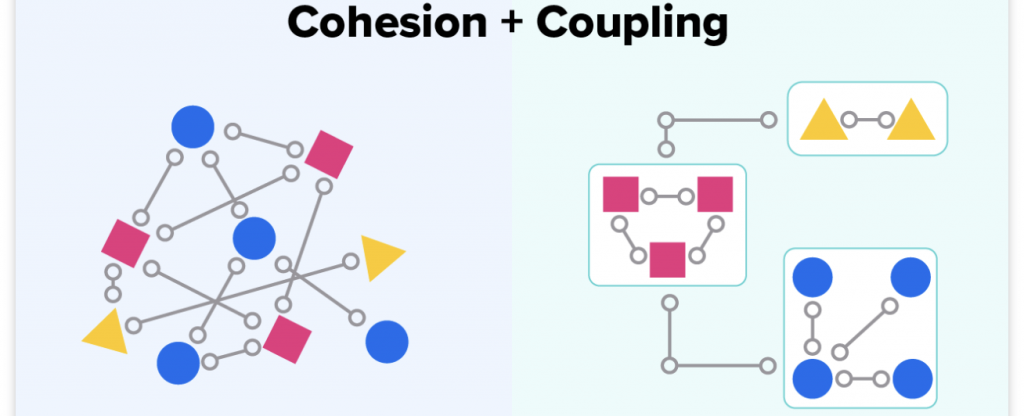
To ensure that microservices are loosely coupled and highly cohesive, you can follow several best practices. Here are some key strategies:
- Single Responsibility Principle: Design each microservice to have a single responsibility, focusing on a specific business capability. This helps to keep the services small, focused, and cohesive.
- Bounded Context: Identify and define clear boundaries for each microservice based on the domain and business context. A microservice should encapsulate a specific domain or subdomain, ensuring that it has a well-defined purpose and scope.
- API Design: Define clear and stable APIs for your microservices. APIs should be technology-agnostic, easy to understand, and provide a narrow and focused interface. Avoid exposing internal implementation details and ensure backward compatibility as much as possible.
- Loose Coupling: Microservices should communicate with each other through well-defined interfaces, such as APIs or messaging systems. Avoid direct dependencies between services by using asynchronous communication and decoupling mechanisms like message queues, event-driven architectures, or service buses.
- Data Management: Each microservice should have its own dedicated database or data store, ensuring that data ownership is localized within the service. This minimizes data coupling and allows services to evolve independently.
- Autonomy and Independence: Empower each microservice team to make independent decisions and choose the technologies and tools that best suit their needs. This promotes faster development cycles and reduces dependencies on other teams.
- Continuous Integration and Deployment (CI/CD): Implement a robust CI/CD pipeline that enables independent deployment of each microservice. This ensures that changes and updates can be made to individual services without impacting others.
- Service Discovery and Orchestration: Utilize service discovery mechanisms to allow microservices to locate and communicate with each other dynamically. Container orchestration platforms like Kubernetes can help manage the lifecycle and scalability of microservices.
- Monitoring and Observability: Implement comprehensive monitoring and logging across your microservices to gain insights into their behavior and performance. This helps identify any issues or bottlenecks and allows for proactive management and maintenance.
- Testing and Validation: Implement a robust testing strategy, including unit tests, integration tests, and end-to-end tests, to ensure the correct behavior of individual microservices and their interactions. Test contracts and use consumer-driven contract testing to verify compatibility between services.
By following these practices, you can create a loosely coupled and highly cohesive microservices architecture, enabling flexibility, scalability, and independent development of each service.
